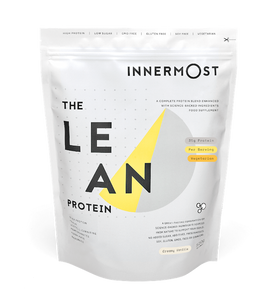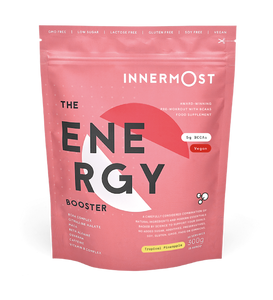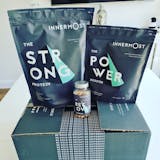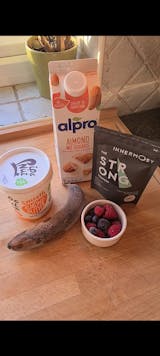Is there anything better than a really good stretch first thing in the morning? We'll argue no. But more than just feeling good, stretching is a super powerful practise that keeps joints flexible, blood pumping and muscles strong and protected from damage. Without it, muscles can shorten and become tight, making us more prone to injury.
We've all been taught since the glory days of Year 1 P.E. at school that warming up before getting active is vital for ensuring we don't strain muscles or otherwise end up in a bad way. But the importance of keeping our body stretched and supple goes far beyond benefitting physical exercise. Stretching helps release endorphins in the body, and so it can also have a profound effect on stress management, and you should be getting it into your daily routine ASAP.

Stretching to de-stress
So you might be asking yourself how spending a mere 10 minutes each day stretching out those limbs can have an impact on your headspace. Here's a few ways in which it can.
Aiding sleep
Keeping your muscles limber with a few evening stretches helps to relieve muscle tension. This enables your body to physically relax more, thus making it easier to fall asleep at night. But make sure to keep these pre-bed stretches gentle. Anything too intense can actually have the opposite effect and keep you awake. Want to level up? Take a hot bath first – this allows your muscles to relax even more, enabling you to stretch further and deeper.
Relieving pain
Stretching each day will keep your joints and muscles relaxed and flexible, ensuring that muscle knots, held tension and injuries are kept at bay. This kind of physical stress on the body can easily translate into mental stress, often without you realising, as you're more likely to maintain a constant state of discomfort in the body.
Meditative benefits
Making that stretch session last a little longer (hold those poses!) can have the additional benefit of allowing your mind to fully focus on and listen to your body. By completely focusing on the feeling of the stretch, your mind can enter a meditative state. The benefits of meditation are well understood these days, and it's widely accepted that it can reduce feelings of anxiety, depression, and even chronic pain. Make sure that you keep up a steady in-and-out flow of breath throughout your stretching, and focus on different areas of the body and how they feel. This is also sometimes known as 'body scanning'.
Yoga instructor Georgia Sugg (@suggyoga) explains: "Meditation is another form of beneficial practise for reducing the stress response. It regulates hormones, improves mood, reduces anxiety and builds resilience to pressure.”
Top stretching tips before you get started
- Make sure you’re stretching in a comfortable location, preferably on a firm but forgiving surface like a yoga mat or a towel. However, carpet will do just as well.
- Don’t overdo it. Your flexibility will gradually improve each time you stretch, but you need to be patient. It can be a slow process, so don’t rush straight into the splits if this is your first time stretching. Pay attention to how things feel – a little discomfort is good (it means it's working), but considerable pain is not, and you’ll end up doing more damage than good if you continue to stretch through that pain.
- Don’t forget to breathe. Taking long, deep breaths throughout your stretches will help keep the body relaxed and free of tension. Sugg adds: "It’s been scientifically proven that deep breathing during stretching influences something called the vagus nerve, which reduces the stress response in the body, allowing our bodily functions to work more efficiently. It also increases oxygenation in the body, which improves respiratory stamina, energy levels and perceived calmness. Essentially, it creates a safe environment for the body to relax, preventing the build up of tension and pain.”
- Be consistent. Stretching doesn’t have to take up hours of your time – a quick five minutes when you wake up is better than nothing. Make sure you stay consistent and incorporate a little each day to keep your body on track.
- Hold the stretch for at least 45 seconds if possible. Sugg says: “The length of time you spend in a stretch is super important. So after around 45 seconds in a stretch there should be a relaxation response where the body just suddenly relaxes as it now knows it’s being supported.”
Stretches to help you de-stress
Standing forward fold
Stand with your feet together or hip width apart. Starting standing upright, with your hands on your hips, let your body slowly fold forward towards the ground. Be sure to fold over from the hips and not the lower back, aiming to keep your back straight the whole way down. Stop once you can't go any further while keeping your back straight. Once you've reached your limit, hold your elbows (in a cradling motion) and let them hang down in front of you, rocking gently from side to side. You can bend your knees slightly if that’s more comfortable.
Cat and cow stretch (lower back stretch)
This one is a yogi favourite, and for good reason. Begin on your hands and knees in a table top position. Inhale, and slowly arch your back and lift your chin up to the sky, making sure to draw your shoulders down away from your ears. Hold this stretch for a few seconds, and then gradually round the spine upwards towards the sky while bringing your head down to look at your legs – exhaling slowly as you do so. Keep repeating for about a minute.
Standing glute stretch
Starting in a standing position, slowly lift your right leg off the ground and place your right ankle on top of your left knee. Gradually bend your left leg until you are in a seated position on one leg, with your right knee pushing out to the side and your hands supporting you on the ground. Repeat on the other leg. This one's great for opening up the hips while simultaneously stretching out the glutes.
Seated neck stretch
If you work at a desk, your shoulders and neck can become extremely tight and hold a lot tension, so stretching out your neck is vital. Start sitting cross legged on the floor with your back straight. Tilt your head to one side, trying to get your ear as close to your shoulder as you can. Slowly roll your head round and down to reach your chin to your chest, then bring your head back around to the other side, again trying to bring the ear to the shoulder. Remember to keep your shoulders relaxed, instead of hunched. Repeat several times, using a hand to gently hold your head down if you need a little extra push. If you want to find even more neck stretches, click here.
Lying quad stretch
Lying face down on the ground (you can rest your head on one arm if you want to), lift one foot up, bending at the knee, towards your glutes. Hold your foot with your arm to gently pull it closer to the glutes for an even better stretch. Repeat on the other side, holding for about 30 seconds on each side.
Standing tricep stretch
Standing upright, raise one arm above your head and then bend at the elbow so that your hand is reaching down your back. With the other arm, grab hold of the elbow and gently pull downwards. Repeat on the other side, holding for about 30 seconds on each side.
So now that you’re clued up on how stretching can help de-stress body and mind, why not get started with five or 10 minutes in the morning or evening? Doing so after a warm shower or bath will ensure you get the maximum benefits when it comes to suppleness and flexibility as the muscles will already be relaxed. Your mind will also thank you for dedicating that extra bit of time to yourself. Remember: start slow, listen to your body, and breaaaathe into it.
To find other workout tips and tricks from Innermost, click here. And if you want to learn more about how you can manage and deal with stress, be sure to sign up to our five-day email course on it, edited by Dr Deba Choudhury-Peters from DCP Therapy.
- Video credits: Yoga With Adriene, Howcast, Runner's World, Life FitnessTraining, Slim League























